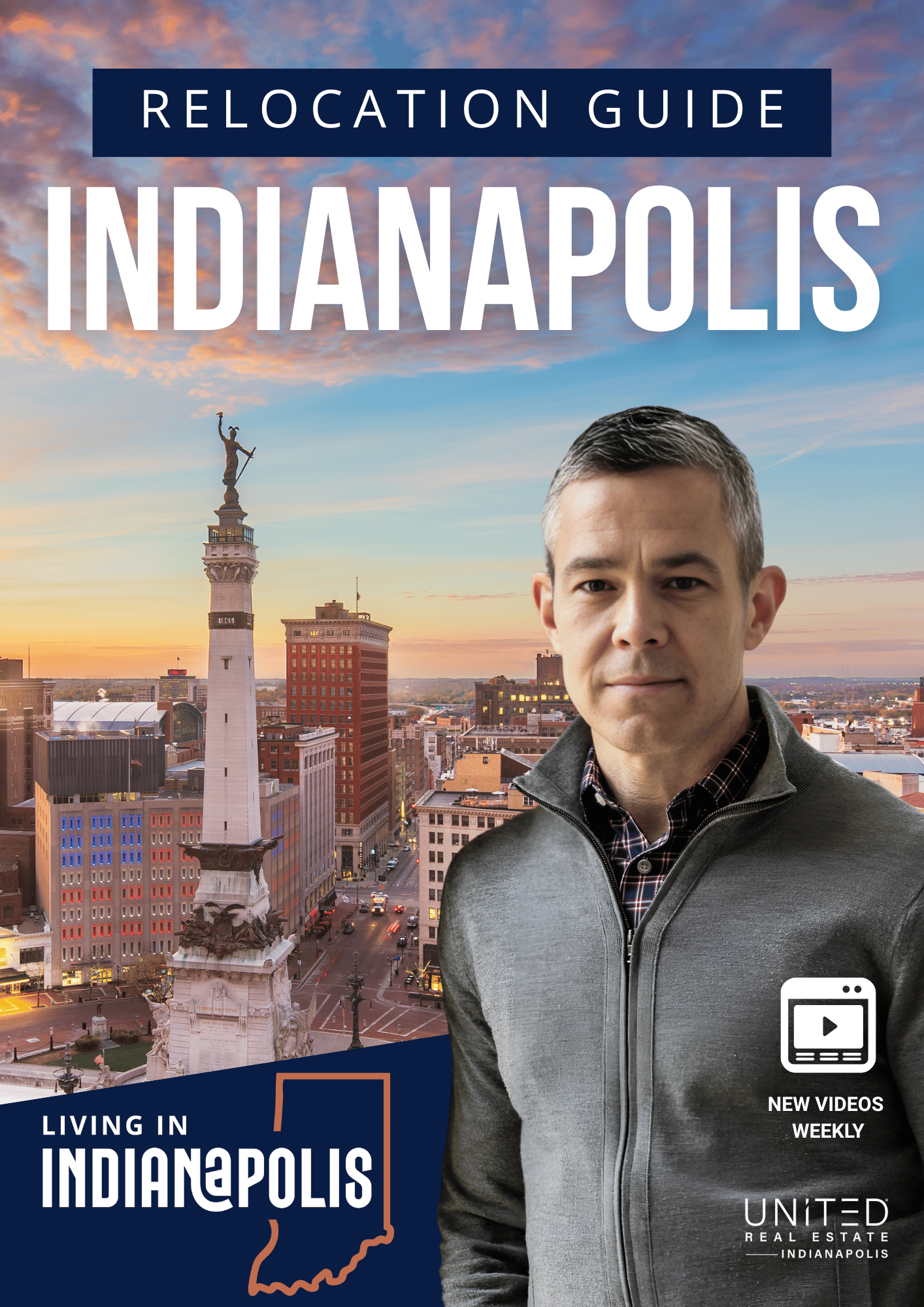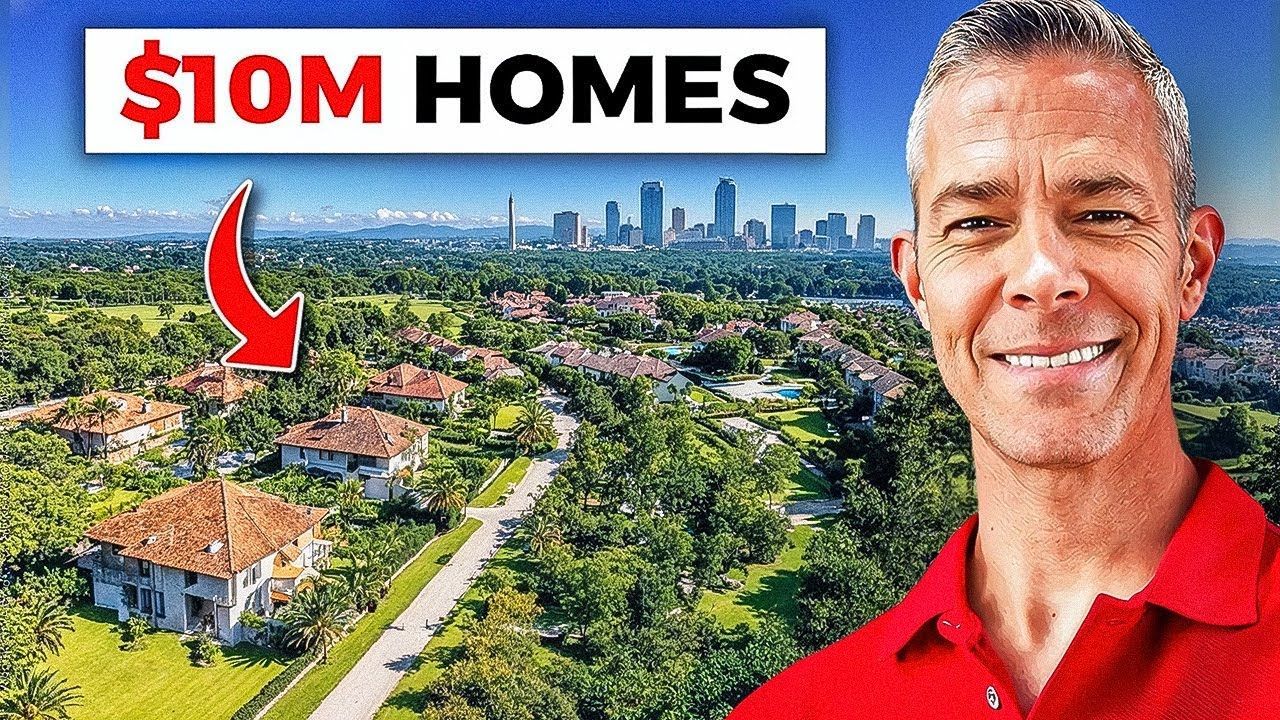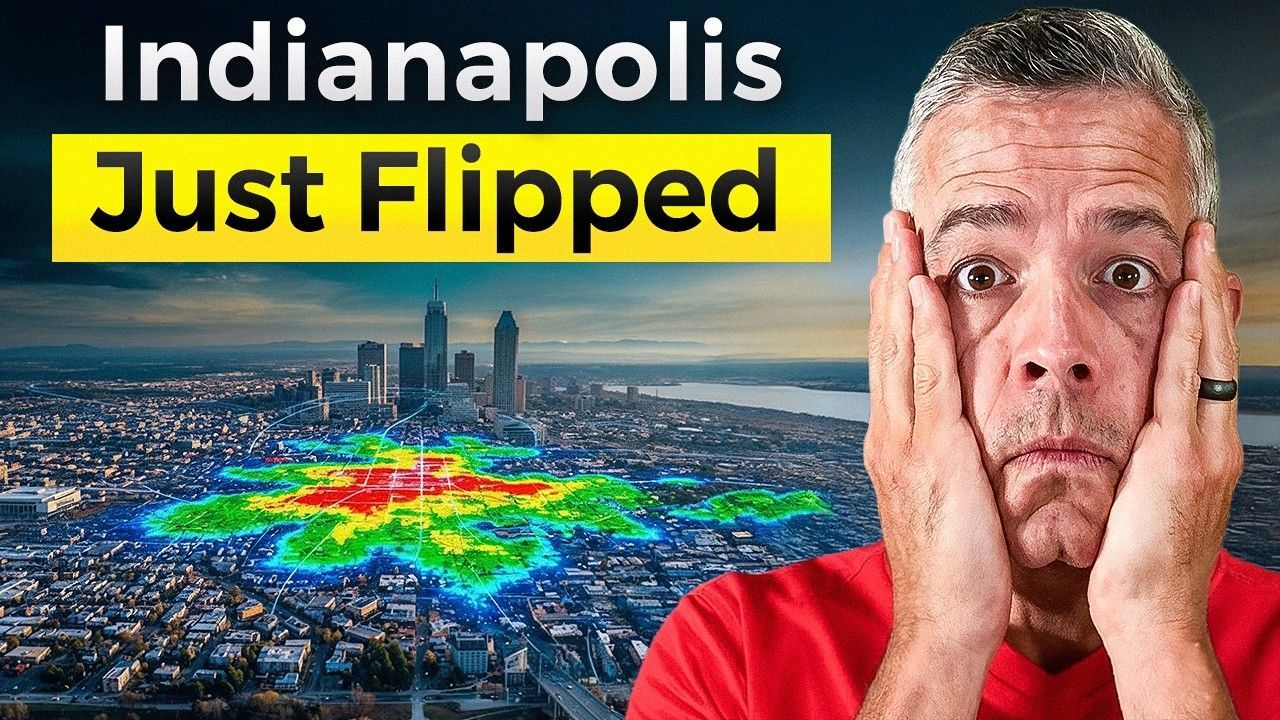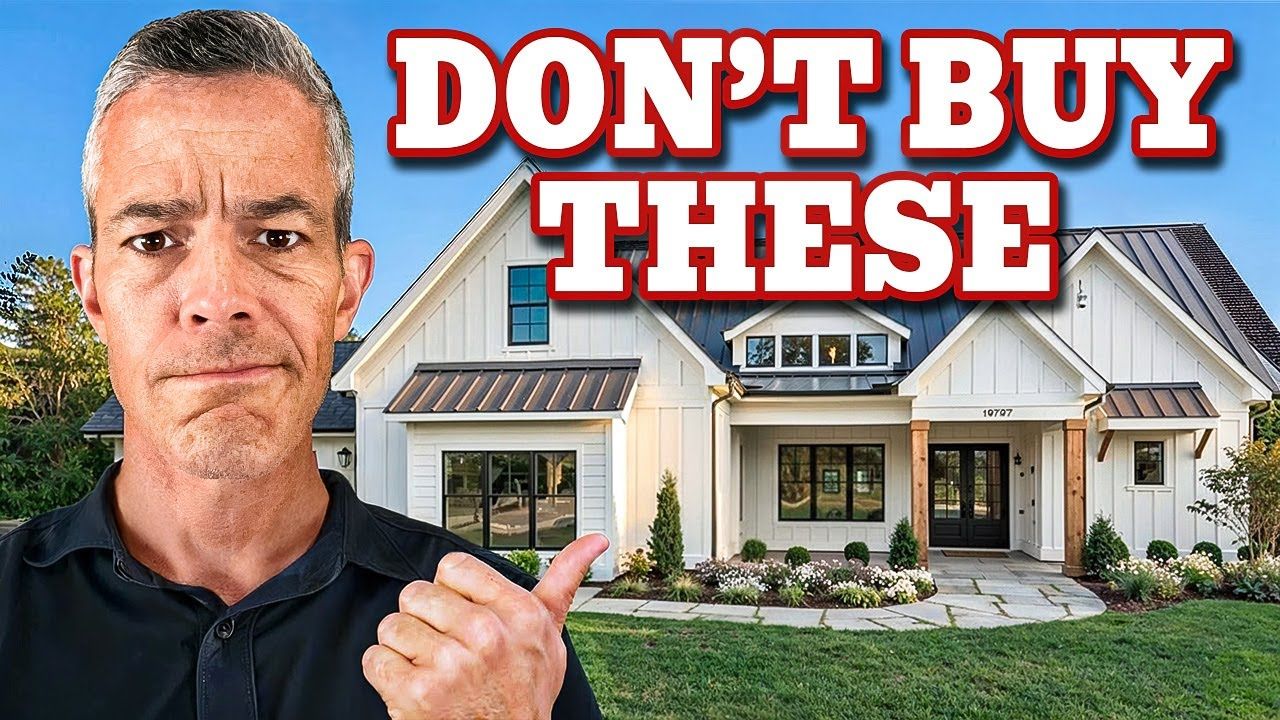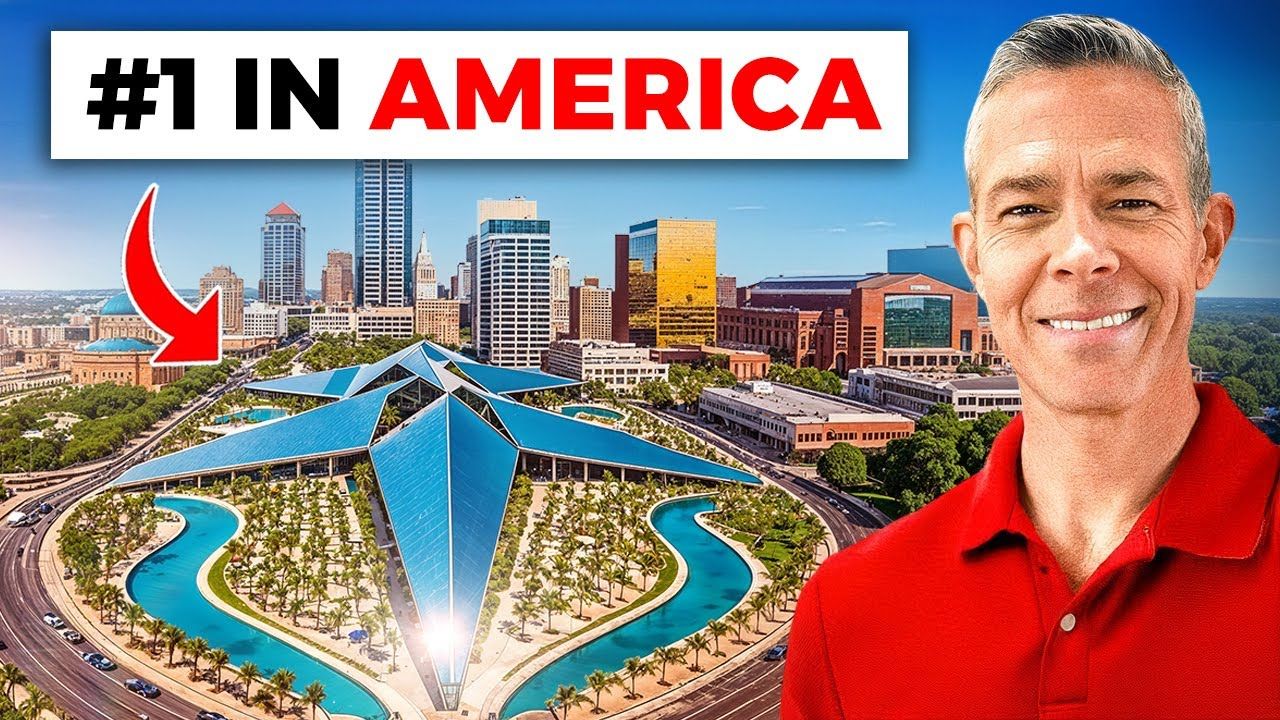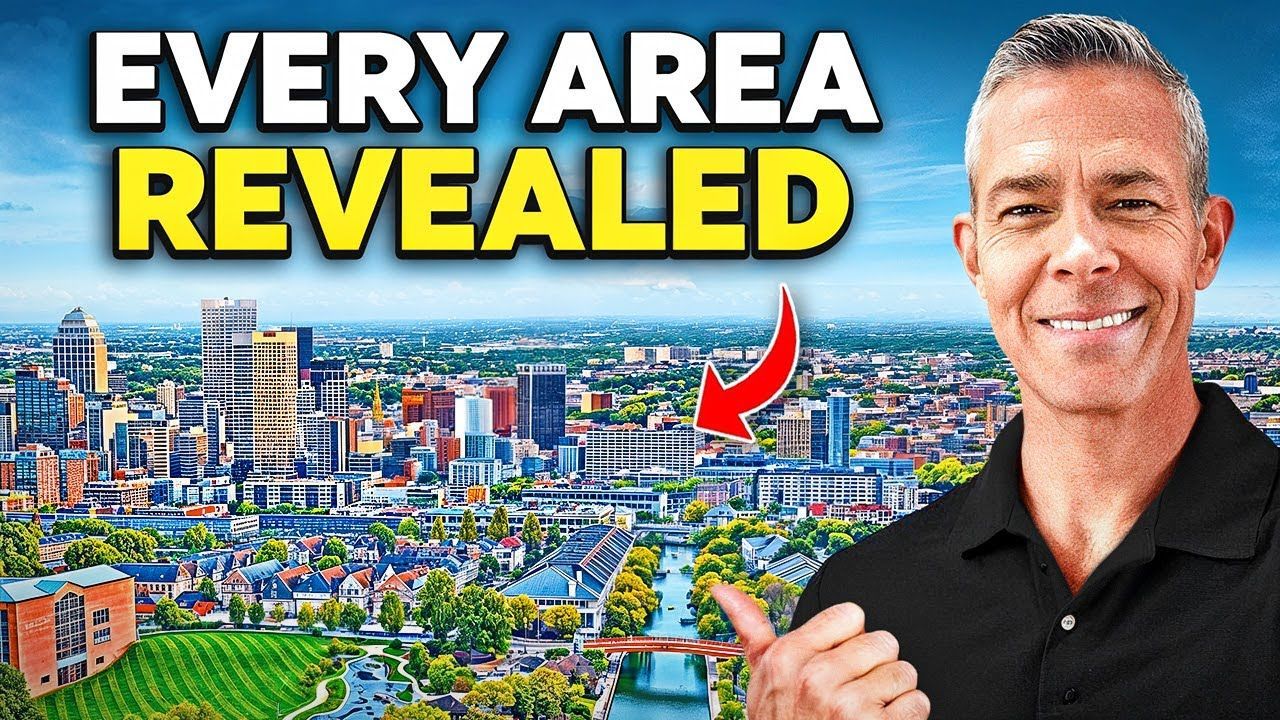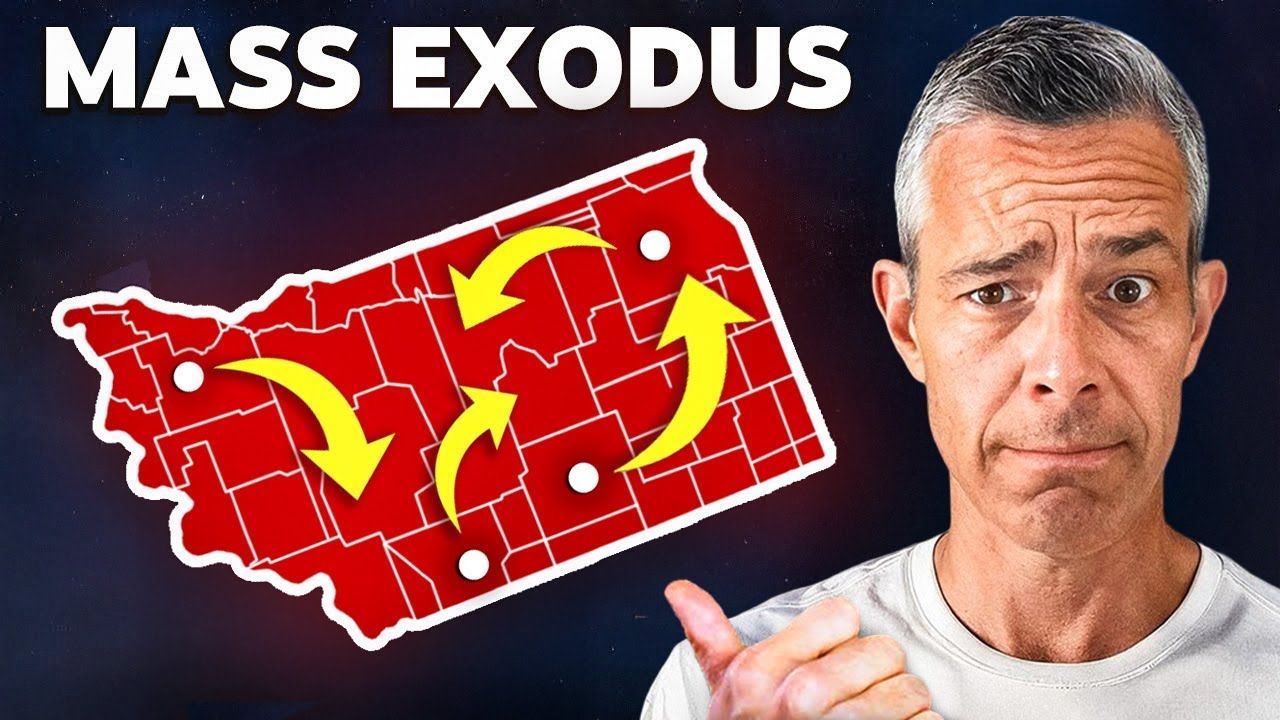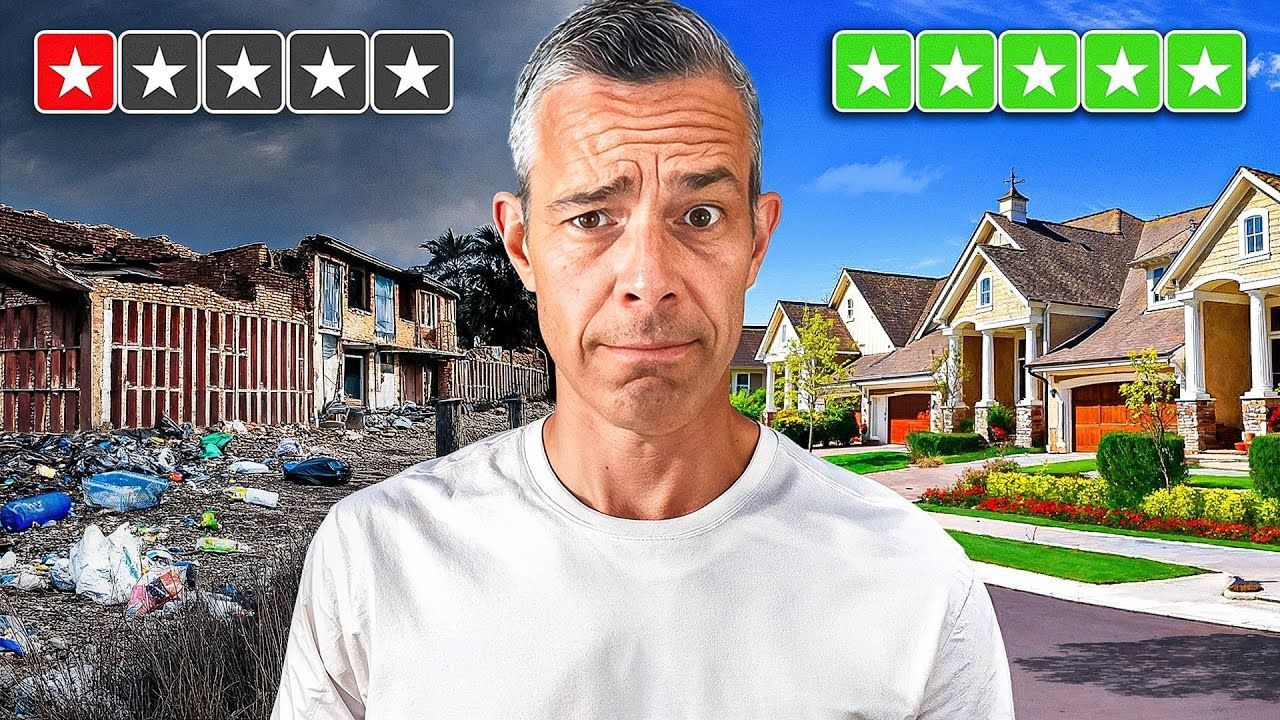The REAL Reasons Indianapolis is #1 CITY in America
If you are considering living in Indianapolis, IN, you probably have questions like What is the city really like? Is it too big? Too small? Boring? Traffic a nightmare? Having lived, worked, and driven around this region for years and now calling Greenfield home, I want to give you a plainspoken look at why living in Indianapolis, IN works for so many people. This is not a tourism brochure. It is a conversational, real-world reflection on what I like about the area and why the balance here matters.
Table of Contents
- 1. Indianapolis is the Right Size — a Medium-sized City With Big-city Benefits
- 2. Big Enough to Have Everything, Small Enough to Avoid Getting Swallowed by It
- 3. Major Events, Sports, and a Surprisingly Strong Performing Arts Scene
- 4. A Food Scene With Local Originals — Indy is Not Boring
- 5. Natural Beauty, Seasons, and Regional Variety
- Putting It Together: Why These Elements Matter for Day-to-day Living
- Tips for Newcomers Thinking About Living in Indianapolis, IN
- Common Misconceptions About Living in Indianapolis, IN
- Neighborhood Snapshots to Consider
- How I Personally Judge a Neighborhood When Moving
- Final Thoughts Before You Decide
- FAQs About the REAL Reasons Indianapolis is #1 CITY in America
- Where to Get Started
1. Indianapolis is the Right Size — a Medium-sized City With Big-city Benefits
One of the first things I tell people when they ask about living in Indianapolis, IN is that it is a medium-sized city that punches above its weight. If you ask locals, you will get a variety of answers, but a common description is that Indy is not tiny and not massive. It feels like a city with neighborhoods, cultural institutions, and major sporting teams, while still being easy enough to get around.
Here’s what that means in practice. The core city might feel compact to many residents, but when you include the surrounding suburbs — Carmel, Fishers, Greenwood, Noblesville, Plainfield, Avon, Greenfield, Brownsburg, McCordsville, Fortville, and others — the broader region becomes a substantial metro area. Add all those communities together and you’re looking at a metro population that has the reach and resources of a much larger urban area.
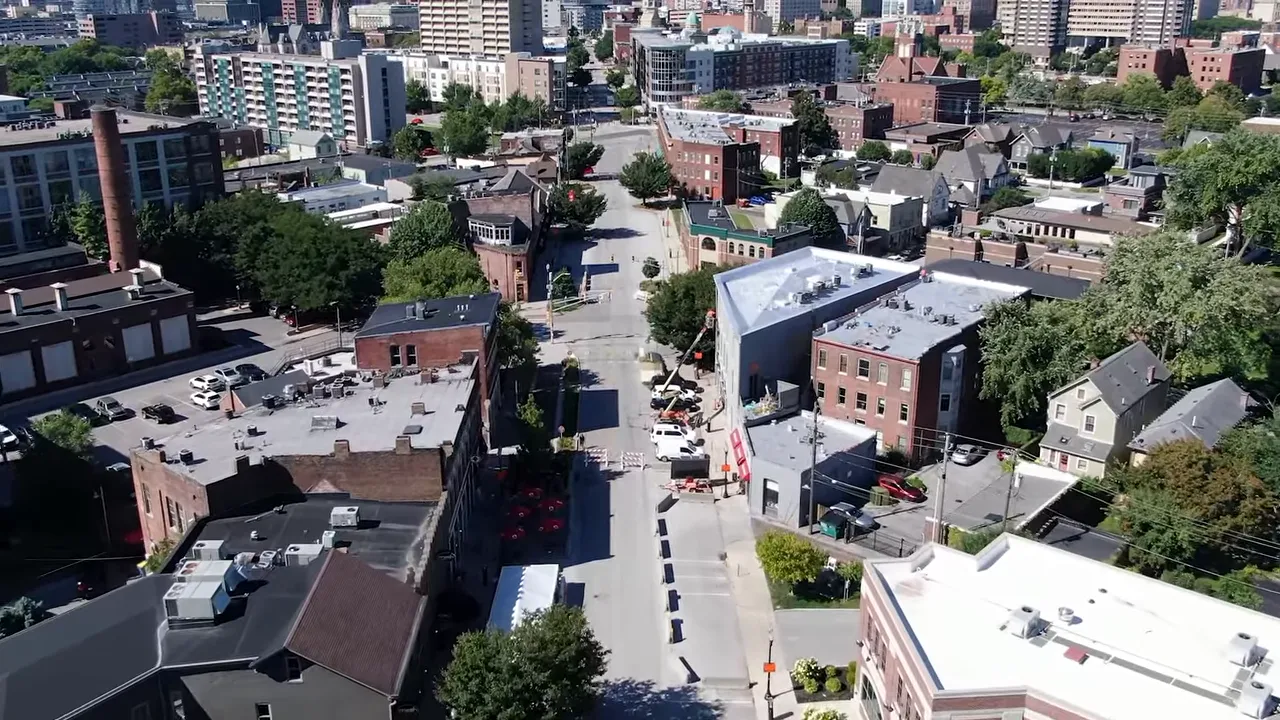
I don’t live inside the Indianapolis city limits right now. I live in Greenfield, which is a short drive east. From my front door to downtown Mass Avenue takes under 30 minutes most days. That short commute is a big part of why living in Indianapolis, IN appeals to so many people. You can have the quieter, more suburban or semi-rural lifestyle without giving up city amenities.
For families especially, that flexibility is huge. You can choose the small-town feel, the suburban school system, or a walkable urban neighborhood in the same metro area. That mixed option set is rare enough to make Indianapolis attractive to newcomers who want choices without the regulatory and cost complexities of a super-dense city.
VIEW HOMES FOR SALE IN INDIANAPOLIS, IN
2. Big enough to have everything, small enough to avoid getting swallowed by it
Another way to put this is simple: living in Indianapolis, IN gives you the benefits of scale — cultural institutions, sports, major events, health care, diverse neighborhoods — without constantly battling awful traffic or impersonal density.
Traffic is a heated topic in any city. Around here, people will tell you everything from It is terrible to It is nothing. My take is honest and middle-of-the-road: traffic is manageable. It is not perfect, but it is far less stressful than in many larger cities. Construction and certain times of day will make driving slower. Weekends or special events can create congestion. But in day-to-day life, you are more likely to encounter reasonable commutes compared with the constant gridlock of much larger metropolitan areas.
If you travel or have spent time in big cities around the world, you will immediately notice the difference. Public infrastructure here supports mobility and the highways are generally easier to navigate than in many coastal or international urban centers. If a priority for you is a short commute and the option to get from A to B without a battle, living in Indianapolis, IN will likely be comfortable.
Of course you still need to watch for cars and use crosswalks. Don’t mistake manageable traffic for no traffic. My point is this: Indy hits a balance. It is neither sleepy country nor relentless urban chaos. That balance is the city’s advantage.
3. Major events, sports, and a surprisingly strong performing arts scene
If you like big events, living in Indianapolis, IN will not disappoint. From the international spectacle of the Indy 500 to regular concerts and touring Broadway shows, the city hosts large-scale entertainment without losing neighborhood character.
Sports lovers will tell you about the Pacers, Colts, and the WNBA team, the Fever. While Indy does not have an MLB franchise, it has a lively minor league baseball scene with a team that plays at Victory Field — a family-friendly, accessible ballpark that offers an affordable outing and a great place for kids to run around. Those everyday moments at the ballpark are part of what makes living in Indianapolis, IN feel like a community experience.
And then there’s the month of May. The Indy 500 is not just a single-day event. It is an entire season and cultural moment, with festivities and energy that touch the entire city. There are also plenty of other racing-related events year-round that many people don’t immediately realize.
Beyond sports, the performing arts are strong. Places like the Hilbert Circle Theatre, Indiana Repertory Theatre, and smaller venues along Mass Avenue bring Broadway shows, local theater, chamber performances, and touring acts. For big-name concerts, you have Gainbridge Fieldhouse and Lucas Oil Stadium. The Ruoff Music Center and the Everwise Amphitheater provide large outdoor venues for summer shows. Whatever your taste in entertainment, you will find options.
4. A food scene with local originals — Indy is not boring
One surprising thing many people mention is food. There are original, local restaurants throughout the metro area that give Indy culinary personality. This is not about chains. It is about hole-in-the-wall gems, chef-driven concepts, and neighborhoods with local flavor. If you think living in Indianapolis, IN means bland chain restaurants, you are missing the pockets of vibrant dining across the city and suburbs.
Massachusetts Avenue, Broad Ripple, Fountain Square, and pockets in Carmel and Fishers host new eateries, coffee shops, and bars where the food scene is active and evolving. You can find breakfast places that feel like community hubs, inventive dinner spots, and family-friendly restaurants that are affordable and welcoming. For many families and newcomers, that local restaurant culture is a large part of why living in Indianapolis, IN becomes enjoyable year after year.
When people call Indianapolis boring, it is often a reflection of not looking hard enough. There are always people here who prefer nightlife in larger cities, or who want extreme adventure access that only mountains or oceans can provide. That is okay. But to call Indy boring overlooks festivals, pop-up events, neighborhood markets, brewery scenes, and art walks that happen regularly across different neighborhoods.
5. Natural beauty, seasons, and regional variety
Beauty is personal. If your definition of beauty requires ocean horizons or towering mountain ranges, then the Midwest will not match that expectation. If, however, you appreciate green seasons, changing leaves, rolling hills in the south of the state, and a sense of space, living in Indianapolis, IN delivers a gentle but real kind of beauty.
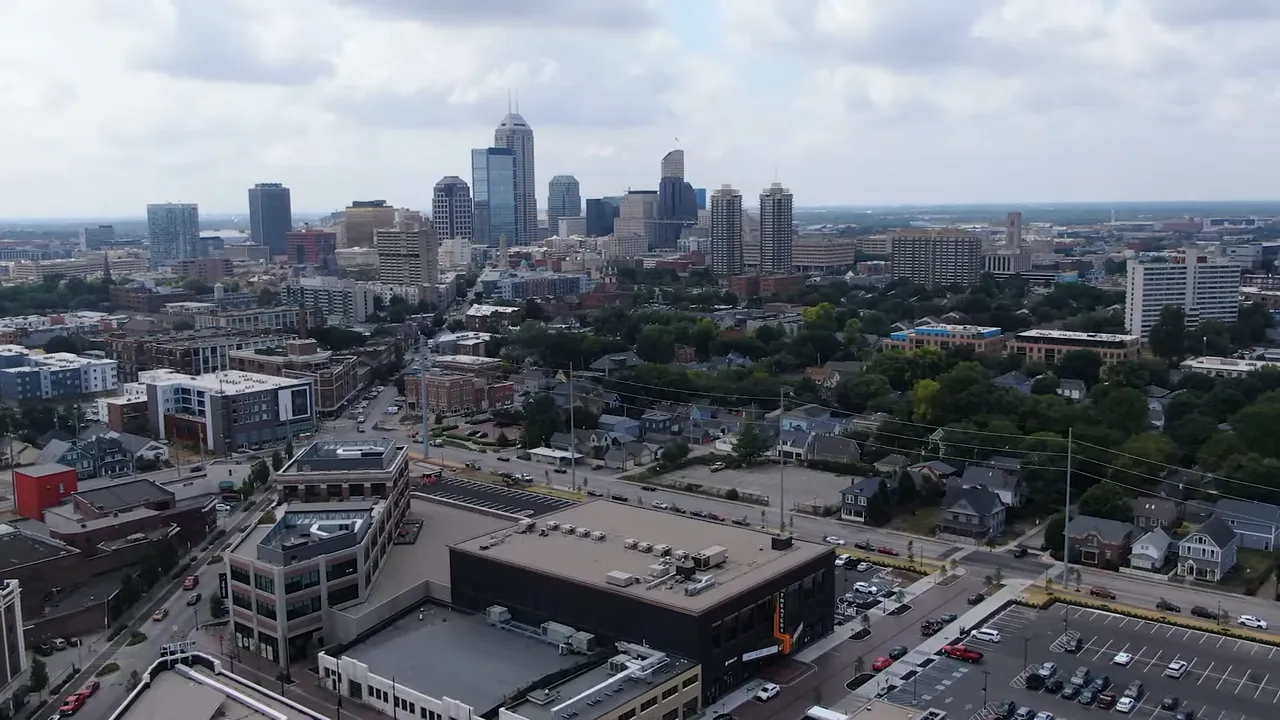
Indiana’s geography varies more than many outsiders assume. Northern Indiana can be flat and open with lots of farmland, which has its own serene appeal. Southern Indiana, not far from Indianapolis, becomes more rolling and forested. Places like Brown County, Monroe State Forest, Nashville, and Bloomington feel different from the flat agricultural land of northern parts of the state. That variety is one of the region’s underrated perks.
From a lifestyle standpoint, I prefer summers that are green and humid, winters that provide a true change of season, and the ability to enjoy both indoor and outdoor activities throughout the year. If you want endless sun or desert drought, Indy may not be your fit. But if you want seasonal variety and a landscape that changes across short drives, living in Indianapolis, IN gives you that mix.
Putting it together: Why these elements matter for day-to-day living
When you combine the size, manageable traffic, events, food scene, and natural variety, you get something that is rare: a city comfortable for family life, flexible for work and commuting, and lively enough for people who want culture and entertainment. That combination makes living in Indianapolis, IN attractive for a wide range of people — from young professionals and families to retirees wanting convenience without congestion.
Practical benefits you will notice:
- Shorter average commute times compared to larger coastal metro areas.
- Access to healthcare and cultural institutions without long drives or extreme crowds most days.
- A variety of housing options — urban condos, suburban homes, and small-town living are all close by.
- Local community feel combined with the amenities of a metro area.
Greenfield, where I live, exemplifies the suburban option. It takes under 30 minutes to downtown from many points in the east side suburbs. Fishers and Carmel cater to families and local amenities; Noblesville has its own character; Brownsburg, Avon, Plainfield, and Greenwood each offer something different. That regional diversity allows you to match neighborhood vibe to lifestyle while still claiming access to the city’s offerings.
Tips for newcomers thinking about living in Indianapolis, IN
If you are seriously considering a move here, here are some practical tips based on what I see and hear from folks relocating to the region:
- Prioritize what matters most: schools, commute time, nightlife, green space? Pick a neighborhood that matches those priorities.
- Spend time in different parts of the metro at various times of day to get a real sense of traffic patterns and neighborhood energy.
- Explore local restaurants, festivals, and sporting events to see where you feel comfortable. The city rewards curiosity and local discovery.
- Consider the seasonal weather in your plans. If you want four seasons, this area delivers. If you want year-round sun, look elsewhere.
- When you rent or buy, remember being 20-30 minutes from downtown can change your lifestyle in positive ways while maintaining access to city resources.
Common misconceptions about living in Indianapolis, IN
There are a few myths that keep cropping up when people evaluate the city. Let’s clear them up quickly.
- Myth: Indianapolis is boring. Reality: There are pockets of real cultural life, music, theater, sports, festivals, and food. You might have to dig, but they are there.
- Myth: Traffic is unbearable. Reality: Traffic exists like in any city, but it is generally manageable and much less intense than in many larger metros.
- Myth: There is nothing to do outdoors. Reality: The region has parks, trails, rivers, and scenic drives, plus easy access to southern Indiana’s forests and hills.
- Myth: Indy lacks big-city amenities. Reality: You get big events, concert venues, and professional sports without the relentless crowds and commuting stress of mega-cities.
VIEW HOMES FOR SALE IN INDIANAPOLIS, IN
Neighborhood snapshots to consider
If you are evaluating where you might live in the metro, here are a few quick snapshots that reflect the region’s range:
- Downtown and Mass Avenue: Walkable, urban, great dining and nightlife, close to theaters and events. If you value being in the middle of things, this is a good fit.
- Carmel and Fishers: Suburban neighborhoods with strong schools, family amenities, and local dining scenes. Good for families wanting suburban space with quick access to city culture.
- Greenfield and surrounding east-side towns: Smaller town feel, quieter neighborhoods, and affordable options with a 20 to 30-minute drive to downtown.
- Plainfield and Brownsburg: Suburban with easy highway access and a mix of long-established neighborhoods and newer developments.
- Southern Indiana day trips: Brown County and Monroe areas provide hills, forests, and a distinct change of pace for weekend escapes.
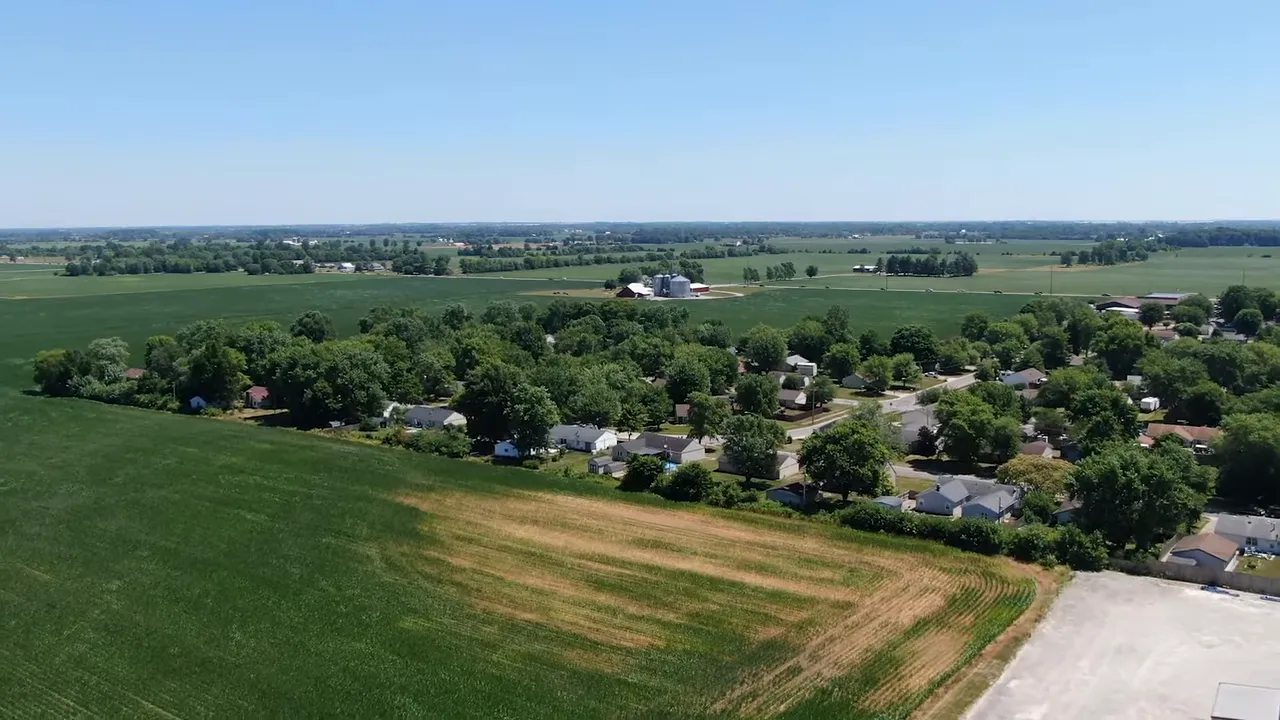
How I personally judge a neighborhood when moving
When I look at a new place to live, I ask a few practical questions:
- How long will my commute be at regular times and at rush hour?
- What are the local conveniences — grocery stores, parks, coffee shops, schools?
- What kind of events and community activities happen nearby?
- Can I see myself walking to a restaurant or coffee shop on the weekend?
- Does the neighborhood match my tolerance for noise and density?
These simple measures go a long way toward judging whether living in Indianapolis, IN will feel comfortable. For many, the answer is yes because the city offers a balance of options and a manageable pace of life.
Final thoughts before you decide
Your sense of whether living in Indianapolis, IN is right for you will depend on personal preferences. Some people prioritize mountains or coastal life, others want nonstop nightlife. For the people who thrive here, Indianapolis provides a comfortable balance: regional choices, access to big events and culture, a robust restaurant scene, and a feeling of space that still allows easy access to downtown.
If you are moving from a much larger city, expect fewer crowds and easier commutes. If you are coming from a rural town, expect more happening and a wider range of services and entertainment. In both cases, the transition tends to be smooth because the metro area supports both lifestyles.
DOWNLOAD YOUR FREE RELOCATION GUIDE
FAQs About the REAL Reasons Indianapolis is #1 CITY in America
Is living in Indianapolis, IN expensive compared with other cities?
Cost of living depends on lifestyle and neighborhood, but generally Indianapolis has a moderate cost of living compared to large coastal cities. Housing is more affordable than many major metros, and you can find a range of price points from urban condos to suburban single-family homes.
How is the traffic when living in Indianapolis, IN?
Traffic is manageable. Rush hours and major events create congestion, but day-to-day driving is typically less stressful than in larger metropolitan areas. Plan for delay during construction and event days.
Are there good schools and family neighborhoods for people living in Indianapolis, IN?
Yes. Suburbs like Carmel, Fishers, and parts of Greenwood and Brownsburg are known for strong public schools. There are also quality private and charter options throughout the region. Neighborhood choice depends on school preferences and commute tolerance.
Is the city safe and family-friendly for people living in Indianapolis, IN?
Safety varies by neighborhood like any city. Many communities in the metro area have family-friendly atmospheres, parks, and active neighborhood groups. Visiting neighborhoods and talking to locals helps gauge fit.
What outdoor activities are available when living in Indianapolis, IN?
You will find parks, trails, and river access within the metro. Southern Indiana offers rolling hills, forests, and state parks for hiking and weekend trips. The city supports outdoor festivals, bike trails, and community events.
Can I live outside the city and still enjoy living in Indianapolis, IN?
Absolutely. One of the area’s biggest strengths is proximity. Suburbs and small towns around Indianapolis offer quieter living while keeping downtown or cultural amenities under an hour away, often much less.
Are there year-round events and nightlife when living in Indianapolis, IN?
Yes. The city has year-round venues for concerts, theater, and sporting events. Outdoor venues are seasonal, but indoor arenas and theaters keep the cultural calendar full in winter months as well.
Where to get started
If you are thinking seriously about moving or spending more time here, start by visiting different neighborhoods during the times you would be out and about. Walk Mass Avenue on a weekday morning, visit Carmel’s Arts & Design District on a Saturday, and check out a family-friendly baseball game at Victory Field. You will get a better feel for daily life than any statistic can provide.
Living in Indianapolis, IN is about choice. You can have a quiet neighborhood and a short commute, or a walkable downtown lifestyle with easy access to concerts, theaters, and sports. The key is knowing what you value and exploring the neighborhoods that match that value. This city rewards curiosity and engagement, and many people who move here quickly find a spot that feels like home.
jason compton
A former teacher turned full-time real estate agent serving Greater Indianapolis. I help buyers, sellers, and relocation clients make informed moves—especially those coming from out of state. From neighborhood insights to home tours, my goal is to simplify the process and help you feel confident in every step.
Stay Informed
Insights, Tips & Life in Indianapolis
Your go-to resource for all things real estate and Indy living. Whether you're buying, selling, relocating, or just curious about the local market, our blog is packed with helpful articles, expert advice, and community highlights to keep you informed and inspired.
